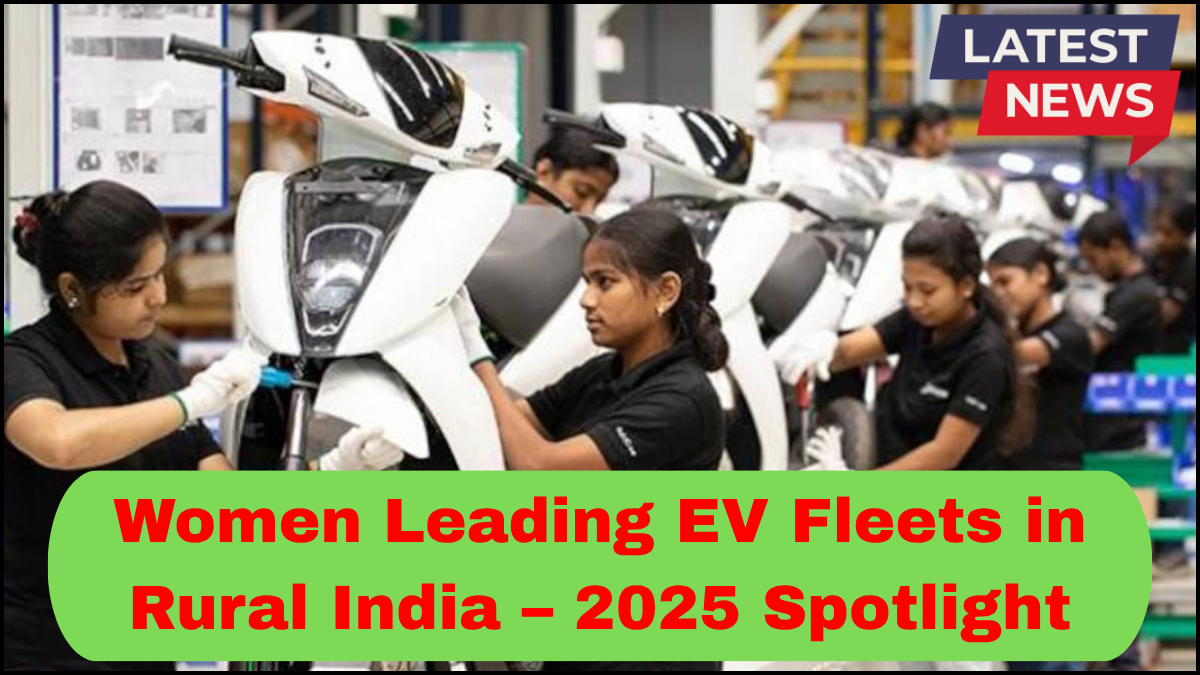In 2025, rural India is undergoing a silent transportation revolution. Electric vehicles (EVs), once a novelty in cities, are now becoming a staple in the countryside—and at the heart of this transformation are women-led EV fleets. These are not just transportation ventures; they are engines of women empowerment, economic upliftment, and green innovation.

Breaking Stereotypes: Women Driving Change in Mobility
Traditionally, rural transport has been a male-dominated sector. But across districts in states like Uttar Pradesh, Bihar, Odisha, and Tamil Nadu, women are stepping into the driver’s seat—literally. Women are now managing, operating, and maintaining electric vehicle fleets that provide last-mile connectivity, school transport, delivery services, and local commuting options.
Organizations and government initiatives such as the National Electric Mobility Mission and state-level EV policies have paved the way. Subsidies, training programs, and soft loans have made it easier for women to own and operate EVs. The result? Thousands of women-led EV fleets in rural India now serve as reliable transport providers while breaking cultural norms.
From Households to Highways: The EV Empowerment Model
The rise of women in rural EV operations is built on a multi-pronged model:
-
Training and Skill Building: NGOs and state transport departments have introduced tailored training sessions for women on driving, vehicle maintenance, route planning, and digital payments. For example, in Maharashtra’s Chandrapur district, over 500 women have been trained under the “Shakti EV” program.
-
Access to Finance: Microfinance institutions and banks have developed EV-specific loan products. Many women now own their autos and e-rickshaws with minimal collateral, supported by government interest subsidies.
-
Community Support and Safety: Female drivers report a greater sense of security when working in women-led cooperatives. These groups offer peer support, handle booking systems, and often liaise with local panchayats for permissions and safe parking zones.
-
Green Credentials with Economic Value: EVs have lower maintenance and fuel costs, increasing profit margins for operators. Women are reinvesting these earnings in their households, children’s education, and even expanding their fleets—turning them into entrepreneurs, not just drivers.
Real Stories: Women Who Move the Village
In Jharkhand, 32-year-old Kavita Devi now runs a fleet of five e-rickshaws. Once a homemaker with no income, she now employs four other women, creating a ripple effect of empowerment. In Karnataka, a group of tribal women operates an all-female school transport service, ensuring that children, especially girls, reach school safely and on time.
These aren’t isolated success stories. Across the country, hundreds of similar stories highlight how EV adoption is directly fueling women empowerment in rural regions.
The Auto Industry’s Role: Gender-Inclusive Innovation
The auto sector has started to take notice. Several Indian EV manufacturers now produce models with adjustable controls and safety features specifically for female drivers. Charging infrastructure companies are deploying mobile app-based solutions that assist rural women in locating and reserving EV charging stations.
Manufacturers are also forming partnerships with NGOs to sponsor EV donations or offer significant discounts to female buyers. These collaborations are helping bridge the gap between technology and accessibility.
Looking Ahead: Scaling the Women-Led EV Fleet Movement
As the demand for clean, affordable transport grows, women-led EV fleets in rural India stand at a tipping point. The focus now must be on scaling these initiatives sustainably:
-
Policy Backing: Stronger incentives for fleet expansion and fast-charging networks in rural areas.
-
Tech Support: User-friendly navigation, language-specific apps, and maintenance AI tools for non-tech-savvy users.
-
Visibility: Promoting success stories through local and national media to inspire others and reduce stigma.
If nurtured properly, the movement could reshape rural mobility and make India a global case study in inclusive, sustainable transport.
FAQs
What are women-led EV fleets?
Women-led EV fleets refer to electric vehicle-based transport services in which women play a central role—owning, managing, or operating the vehicles. These fleets serve various rural needs such as commuting, school transport, and goods delivery.
How are women in rural India benefiting from EVs?
Women are gaining financial independence, community recognition, and personal empowerment through EV ownership and fleet management. It also offers a sustainable livelihood with low operational costs.
Is government support available for women to start EV fleets?
Yes. Various central and state-level schemes offer subsidies, low-interest loans, and skill development programs specifically aimed at encouraging women to enter the EV mobility space.
Are EVs suitable for rural areas with limited infrastructure?
Modern EVs are increasingly designed for rugged conditions and require minimal maintenance. With the rollout of decentralized charging stations and solar charging options, rural infrastructure is gradually catching up.
What role does the auto industry play in supporting rural women?
Auto companies are developing women-friendly vehicle designs and collaborating with NGOs to train and support women in rural areas. They’re also playing a role in expanding rural charging and service infrastructure.
click here to learn more